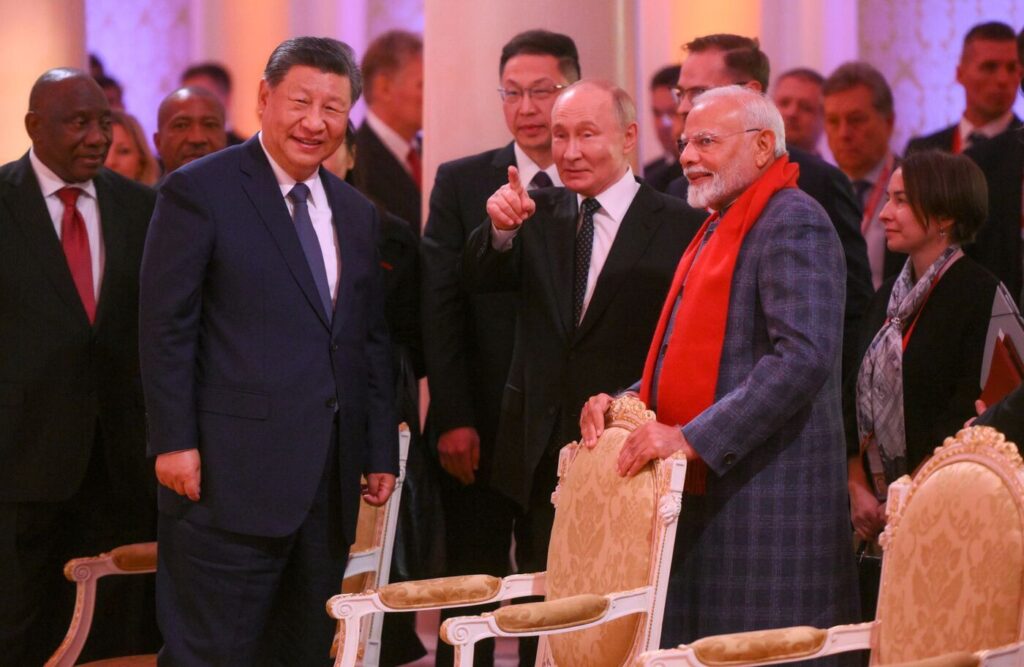Russia’s oil exports shift eastward as China and India now absorb nearly 85% of its crude sales amid Western sanctions.

As Western sanctions against Russia continue to mount following the Ukraine conflict, a dramatic shift in global oil trade dynamics has taken center stage. The once Europe-centric Russian energy market has found new lifelines in Asia — particularly in China and India, which together now account for nearly 85% of all Russian oil exports. This realignment in energy trade is not just a matter of numbers; it signals a profound geopolitical and economic shift with far-reaching consequences.
Russia’s pivot to the East began shortly after the West imposed sweeping sanctions in 2022, aiming to choke the Kremlin’s war finances by capping oil revenues. However, instead of curbing Moscow’s earnings, the sanctions pushed it to find eager buyers elsewhere — and Asia delivered.
In the latest breakdown of export figures, China and India have emerged as dominant players. India, which imported minimal Russian oil prior to the Ukraine invasion, now purchases millions of barrels monthly. China, already a key consumer, has only deepened its ties. Reports from international energy agencies confirm that by mid-2025, these two nations were purchasing more than four-fifths of Russia’s total oil exports.
For India, this shift is primarily economic. Russian crude — often sold at a heavy discount due to its pariah status in the West — fits perfectly into India’s budget-conscious refining strategy. Major Indian private refiners such as Reliance Industries and Nayara Energy have ramped up their imports, often blending Russian oil with others to sell on the global market or refine for domestic use. Government-owned refiners have followed suit, creating an energy buffer as global prices remain volatile.
China’s relationship with Russian oil is rooted in both strategy and necessity. With an economy that consumes vast amounts of energy and a desire to lessen dependence on Western-aligned Gulf states, Russia presents a reliable partner. Chinese energy giants have locked in long-term contracts with Russian suppliers, ensuring consistent access to discounted crude amid rising tensions with the United States.
This surge in oil trade has kept Russia’s economy afloat despite Western efforts to weaken it. Moscow’s oil revenues — though somewhat reduced from pre-war peaks — remain strong, funded in large part by buyers in New Delhi and Beijing. In fact, analysts suggest that if these two countries were to suddenly withdraw, Russia’s fiscal standing would face significant instability.
Western policymakers are aware of this and have begun signaling their concern. The European Union, for instance, is considering tightening its already aggressive price cap regime. The United States has floated the idea of secondary sanctions, potentially penalizing countries or companies that facilitate Russian oil exports — a move that would directly challenge Indian and Chinese strategies.
Despite this pressure, both Asian powers show no signs of retreating. Indian officials have maintained that energy security and affordability are top priorities, while China has made clear that it won’t be dictated by Western energy policies. This defiance, coupled with mutual economic benefit, means the Russia-Asia oil corridor will likely remain robust.
There are also broader geopolitical implications. With Russia, India, and China already part of various multilateral forums like BRICS and the Shanghai Cooperation Organisation (SCO), this energy bond adds a deeper layer to their partnerships. Shared trade interests are increasingly becoming a foundation for strategic alignment, particularly as each country tries to carve out more independent roles in the global order.
However, this alignment isn’t without its frictions. India and China remain wary rivals with deep border tensions, and both compete for influence in the same Asian and African markets. Yet, their common interest in cheap, reliable oil has created an uneasy but effective truce on the energy front.
Meanwhile, Europe continues to reduce its dependence on Russian fossil fuels. Imports have dwindled to historic lows, with many EU nations accelerating their shift to renewables or sourcing oil from Gulf states and the United States. This vacuum created by Europe has been quickly filled by India and China — not only in terms of volume but also in logistics. Tankers that once crossed the Baltic to Rotterdam now travel vast distances to Asian ports, often using a “shadow fleet” of aging vessels that defy Western insurance and tracking systems.
This new energy map could have lasting implications. As Asia becomes Russia’s primary customer, Moscow’s policies and priorities are shifting eastward. Infrastructure projects like the Power of Siberia 2 pipeline and increased investment in Far Eastern ports reflect this changing focus. If this trend continues, Russia’s economic reliance on the West — which once gave it leverage and prestige — may become a thing of the past.
In essence, the dominance of China and India in Russia’s oil exports is no longer just an outcome of wartime necessity. It is now part of a broader realignment — a shift toward a multipolar world where economic and political alliances are increasingly shaped by pragmatism rather than ideology.
How long this dynamic will last depends on numerous factors: the longevity of Western sanctions, the outcomes of geopolitical conflicts, and domestic political changes in the involved nations. But for now, one thing is clear — Russia’s energy heart now beats to the rhythms of Asia. And China and India are not just customers; they are lifelines.

